Three 2020 DOC NYC highlights are portraits: Chris McKim’s hard-edged Wojnarowicz (on David Wojnarowicz, who died from AIDS in 1992); Robert Yapkowitz and Rich Peete’s In My Own Time: A Portrait Of Karen Dalton (on singer/songwriter Karen Dalton, who died from AIDS in 1993, executive produced by Wim Wenders and featuring interviews with Nick Cave, The Holy Modal Rounders’ Peter Stampfel, The Ice Storm novelist Rick Moody, and Nirvana manager Danny Goldberg (who says Dalton was “idolised by Bob Dylan”); and Malia Scharf and Max Basch’s intimate Kenny Scharf: When Worlds Collide on Kenny Scharf’s universe, which included Keith Haring (who died from AIDS in 1993) and Jean-Michel Basquiat (a heroin overdose in 1988).
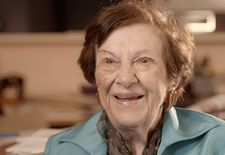 |
| Christian D Bruun on Ruth Finley: “I was first introduced to Ruth by Kate DelPizzo, a producer on the film.” |
A fourth portrait highlight is Christian D Bruun's Calendar Girl on Ruth Finley (who died in 2018 at the age of 98), the creator of the Fashion Calendar, which features interviews with the who’s who of the fashion world (including Bill Cunningham; Carolina Herrera, who designed the white pantsuit and pussy-bow blouse Vice President-elect Kamala Harris wore last Saturday on stage with President-elect Joe Biden; Thom Browne; Fern Mallis; former curator-in-chief of the Anna Wintour Costume Center at The Metropolitan Museum of Art, Harold Koda; Diane von Furstenberg; CEO of the Council of Fashion Designers of America, Steven Kolb; and an Andrew Bolton (the Wendy Yu Curator in Charge of the Costume Institute at The Metropolitan Museum of Art) stroll with Finley through the China: Through the Looking Glass exhibit.
Ruth Finley, who had been an organisational maven of the fashion industry since 1941, is lauded and celebrated for her life’s work behind the scenes in Calendar Girl. It is 2014, two weeks before Fashion Week in New York and she and her team of two are on the phones working out the scheduling, and by the copier to print the Fashion Calendar on pink paper.
Ruth was the mastermind deciding when which show was to take place to avoid conflicts among the designers. Carolina Herrera says that “Ruth was perfect solving problems.” Nanette Lepore enthusiastically praises Ruth for working with her on scheduling all of her shows. Diane von Furstenberg states that the first call always goes to Ruth. Bill Cunningham gushes about her outstanding quality as a human being. Ruth’s son Larry Lein talks about what could have been an “impartial listing service” and how it all began. Ruth started the Fashion Calendar after graduating from college. Pink was chosen because the colour made it easy to find on a cluttered desk.
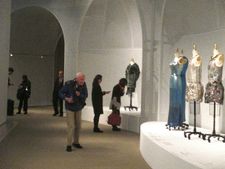 |
| Bill Cunningham in Calendar Girl, on Ruth Finley: “She reached out and she helped young people.” Photo: Anne-Katrin Titze |
Most interestingly, the documentary takes us back in time to when Ruth Finley was hired as a girl Friday by the number-one fashion publicist for American designers, Eleonor Lambert. During the war, Lambert started “Press Week” at The Plaza or The Pierre in New York. In order to avoid scheduling conflicts of the shows for the buyers and press, the calendar was born. “Ruth was Oz-like,” Steven Kolb says, working behind the scenes unlike Diana Vreeland (famed Editor-in-Chief of Vogue and curator at The Met Museum’s Costume Institute) or Lambert.
After 69 years, her office is closing and everything is packed in boxes to be stored. Archivist David Benjamin, makes clear what a treasure this is, a chronicle of the fashion world that does not exist anywhere else. “It’s like you’re archiving me,” comments Ruth. Koda and Fashion Institute of Technology Director Valerie Steele call it “incredible history.”
On the first Monday following the US elections, Calendar Girl director Christian D Bruun joined me for a live e-mail exchange conversation.
Anne-Katrin Titze: Where are you this afternoon?
Christian D Bruun: I am in California, having wrapped up filming for another documentary.
AKT: What is the subject of your latest documentary?
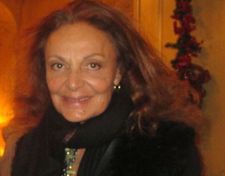 |
| Diane von Furstenberg in Calendar Girl: “All of us designers have an emotional connection with Ruth Finley.” Photo: Anne-Katrin Titze |
CDB: It is about the contemporary art world. My team and I spent the past year or so, pre-pandemic, filming in the US and Europe.
AKT: Who first introduced you to Ruth Finley?
CDB: I was first introduced to Ruth by Kate DelPizzo, a producer on the film. Kate spoke about her amazing family friend, Ruth Finley, who had been a major force in New York fashion for over 70 years, and whose Fashion Calendar was to be sold imminently.
No one had documented Ruth's life’s work and the impact she had on New York fashion. This was Fall 2014, and to me, the opportunity to capture this moment, and to film the last few weeks of the office still operating, and the last printed version of the calendar before it went online, was an important opportunity.
AKT: The structure of Calendar Girl is remarkable. From the general ideas on the art of scheduling for the fashion industry, you move closer and closer to Ruth Finley’s life and her as a human being, to then open the film up again to questions of business ethics, technology, and the importance of archiving. Please tell me a bit about this structure!
CDB: Thank you very much for your kind words. I wanted to seek a balance between fashion history and Ruth’s personal story. I was very interested in finding out who Ruth was as a person. She hadn’t spent her life telling her own story, so it became clear we needed to show how she viewed her own role in the fashion industry and also how her role impacted the industry as a whole. So there were two narratives of the same history.
 |
| Thom Browne in Calendar Girl: “One of the main reasons I want to be in fashion - it’s an outlet for me to tell a story for those 15 minutes.” Photo: Anne-Katrin Titze |
Ruth was someone who led by example. We tried to establish the fashion history into which she had entered and worked, from the industry’s perspective. As we got to know her better, it was important to show how her personal outlook on life informed her choices. She maintained her integrity, she didn't take advertisements, and she treated people with fairness and kindness, all with tremendous success.
She had a strong and savvy view of what her role was, yet she did it with love of people and love of fashion. I believe that the overarching message is that kindness goes a long way; and anyone who has lived to be both a disrupter and "the old guard" gets to claim a productive and well-lived life.
AKT: Nancy Chilton [Chief External Relations Officer for The Costume Institute] speaks about Ruth adding humanity to the business and you show Ralph Lauren giving her a hug at the end of his runway show. At another point in the film we see Ruth walk with Andrew Bolton through China: Through the Looking Glass. Has The Met Costume Institute been helpful for you? Have you seen the fabulous About Time: Fashion and Duration exhibition yet?
CDB: The Met's Costume Institute was incredibly helpful and when we filmed there with Ruth, the collective fashion history knowledge among Harold Koda, Nancy Chilton, and Andrew Bolton was palpable. Harold Koda was particularly generous with his time and Ruth absolutely loved walking through the exhibitions with Andrew Bolton. And Nancy Chilton, a genuine encyclopedia of fashion history, was so helpful throughout the filming. Unfortunately, I have not had a chance to see their latest exhibition as I am on the West Coast, but it is definitely on my list!
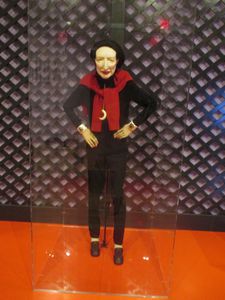 |
| Greer Lankton's sculpture of Diana Vreeland at the Museum of Art and Design Photo: Anne-Katrin Titze |
AKT: You have a lot of great archival footage perfectly placed throughout. I particularly like Donna Karan’s Dry Idea commercial. Was it difficult to decide which shows, what clips to include for you and your editor Rosie Nakamura?
CDB: Rosie Nakamura and I spent a long time deciding on the amount of archival clips and stills to use. My producers Natalie Nudell and Tracy Jenkins Yoshimura are fashion historians, so their knowledge and input was absolutely central in the process. It was also great fun to watch footage from a different time. However, we wanted to spend as much time as possible with Ruth, so we kept the archival material as precise as we could to understand and get a feel for the times.
AKT: When we see Ruth leaving her office, I was reminded of Richard Press’s Bill Cunningham: New York in which he is seen moving out of his apartment/studio in Carnegie Hall with all his boxes. Just seeing her in the generic CFDA cubicle is chilling. I like very much the points that are made about archiving and archaeology (by David Benjamin, Valerie Steele of FIT and others). Is the act of archiving also an important element for you when you make documentaries?
CDB: It was a very emotional time being there with Ruth as she and her two editors closed the office and she turned off the lights for the last time. But it was reassuring to witness the great care with which the archivists treated her legacy as they rolled out her life’s work in boxes. It was definitely also a heavy moment.
When you make a documentary you are always aware that you are recording events that may be of importance to the future. So I take great care in archiving all the materials while we are working on our films. Such a small percentage of the filmed footage end up on the screen, so you are always thinking about how to preserve it or how to save scenes for additional material to release as a companion to the film.
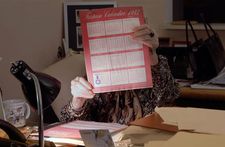 |
| Ruth Finley - Fashion Calendar 1947 |
AKT: Stan Herman, former president of the CFDA, says: “Nothing is like the CFDA. The CFDA is both the Senate and the House of Representatives.” Saturday night, Kamala Harris wore a white Carolina Herrera pantsuit (and a pussy-bow blouse). Politics is never really far from fashion?
CDB: I love that Stan Herman comment, and it makes me laugh every time. I would say passion goes with politics, and passion is always present in fashion on both creative and business levels. What made Ruth unique was that she was a master problem-solver who understood both the political and the practical landscape of New York fashion. There is a lot of money, reputations, and egos involved in the fashion industry.
She knew the importance of how to appear on the scene and she guided and advised designers on any conflicts that could impact their presence. From the fashion models' schedules, to the availability of the most appropriate press, to the logistics of putting on a fashion show, Ruth was able to advise and personally handle any problem.
AKT: It is fascinating to watch this documentary now. The pandemic has of course had tremendous impact on what used to be Fashion Week, but the writing on the wall has been there for years and years, precisely because the “human element” was disappearing together with a sense of history. You show the important role Eleanor Lambert played in getting recognition for American fashion in the 1940s with Paris being occupied. Someone should make a documentary about Lambert, don’t you think?
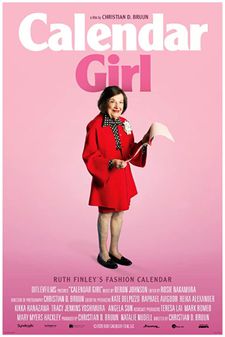 |
| Christian D Bruun: “I take great care in archiving all the materials while we are working on our films.” |
CDB: I cannot agree more. Eleanor Lambert was a role model for Ruth in so many ways, even though they had very different styles of doing business.
The role of the calendar is still a question mark in the fashion world. The industry is in the middle of a massive change and there is no clear answer on the horizon. But overall I think it is important to recognise what it means to lose the human touch. Digital tools are great for handling huge amounts of data and making it available, so it’s clear to see the advantages there. But learning from Ruth, perhaps the love of the game and personal interaction is the main driver for success and happiness.
AKT: One last question. I have not seen The Burning Child that you co-directed with Joseph Koerner. Is the title referring to Freud’s case study?
CDB: Yes, the title refers to the Freud case study of the Burning Child. I really appreciate how well researched and detailed you are in your questions. Thank you so much for taking the time to watch!
The eleventh edition of DOC NYC opened last night, November 11.
Calendar Girl will screen virtually in the Metropolis competition at DOC NYC through Thursday, November 19.
Kenny Scharf: When Worlds Collide will screen virtually in the Arts & Culture program at DOC NYC through Thursday, November 19. In My Own Time: A Portrait of Karen Dalton will screen virtually in the Sonic Cinema program at DOC NYC through Thursday, November 19. Wojnarowicz will screen virtually in the Metropolis competition at DOC NYC through Thursday, November 19.






















